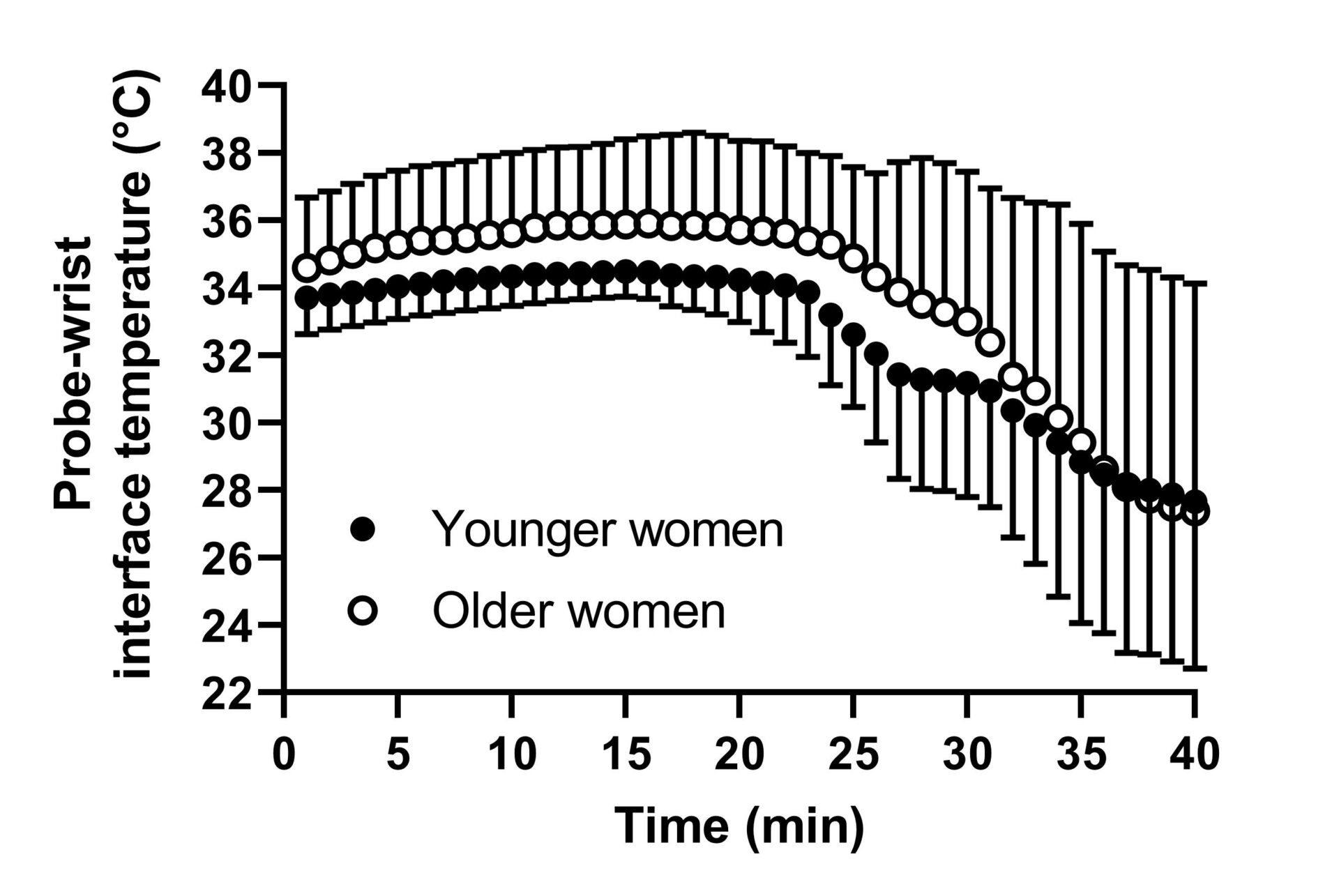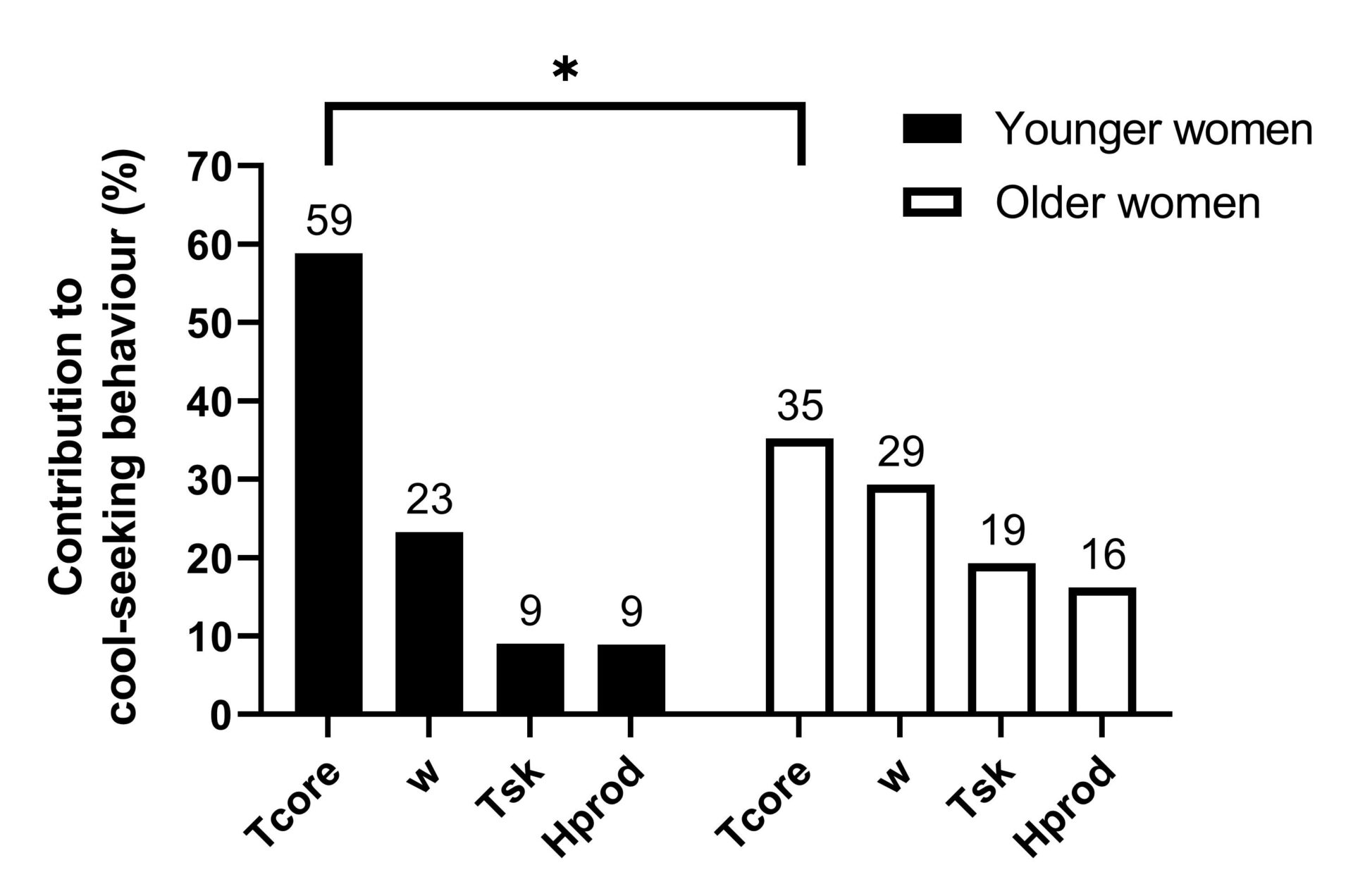Introduction
Hot weather and heat extremes have severe detrimental effects on individuals’ health, comfort, and productivity [1]. Behavioural thermoregulation represents humans’ first line of heat defence due to its greater capacity than energy-demanding autonomic responses (e.g. vasodilation and sweating) [2]. Yet, mechanistic research on the determinants of thermal behaviours and their individual variability with sex and age remain limited [3]. For example, women continue to be largely unrepresented in autonomic and behavioural heat-stress research [4]. This knowledge gap provides barriers to develop interventions (e.g. personalised cooling) and solutions (e.g. body-mapped sport garments) that meet the thermal needs of women across different life stages. This study aimed to evaluate the biophysical, thermo-physiological, and perceptual determinants of cool-seeking behaviour during exercise heat-stress in younger and older women.
Methods
Eleven younger (25±5y; 1.7±0.1m; 63.1±5.2Kg) and 11 older women (53±6y; 1.7±0.1m; 65.4±13.9Kg) performed a 40-min incremental cycling test (workload: 20 to 80W; 20-W increments at 10-min intervals) on a cycle-ergometer in a thermoneutral environment (22 ± 1.7°C; 36±4 RH). Throughout the test, a cooling probe (25cm2) was secured to the participants’ wrist, and participants freely adjusted the probe’s temperature to offset thermal discomfort arising from exercise heat-stress. We continuously recorded the probe-wrist interface temperature (Tinterface; micro-thermocouple) to quantify participants’ cool-seeking behavior. We also measured participants’ rate of metabolic heat production (Hprod; indirect calorimetry), changes in core temperature (Tcore; gastrointestinal telemetry), and in mean skin temperature (Tsk) and wetness (w; thermo-hygro- sensors) throughout the exercise. Finally, we quantified participants’ cold sensitivity at the wrist via quantitative sensory testing prior to exercise. We compared the onset (time) and amplitude (Δchange) of cooling, and its minimum temperature, between younger and older women, with unpaired t-tests. We modelled the relative contributions of Hprod, Tcore, Tsk and w to changes in Tinterface for each participant via multiple regression analyses and compared older and younger women with a mixed-model ANOVA. We evaluated the association between wrist cold sensitivity and cooling amplitude via Pearson’s correlation.
Results
We found no differences in cool-seeking behaviour’s onset time (1.4min [95%CI -4.8, 7.7]; p=0.633), amplitude (2.2℃[-3.2, 7.7] p=0.406) and minimum cooling temperature (-0.3℃ [-5.5, 4.9]; p=0.908), between younger and older women (Fig. 1). We also found no association between wrist cold sensitivity and cooling amplitude in younger (0.11; p=0.737) and older women (-0.36; p=0.269). Multiple regression models indicated that changes in Tinterface were primarily described by changes in Tcore, followed by w, Tsk, and Hprod (R2=0.95±0.05; p<0.0001) in both younger and older women (Fig. 2). However, we observed a statistically significant decrease in the relative contribution of Tcore to changes in Tinterface in the older women (-23% [5, 42]; p=0.006; Fig. 2).
Conclusions
Younger and older women present similar onset and amplitude of cool-seeking behaviour during exercise heat-stress; however, older women’ thermal behaviour appears less reliant on changes in core temperature and more dependent on changes in multiple thermo-physiological (w, Tsk) and biophysical (Hprod) variables. Predictions of female cool-seeking behaviours based on thermo-physiological and biophysical variables should therefore consider the modulatory effect of ageing.


